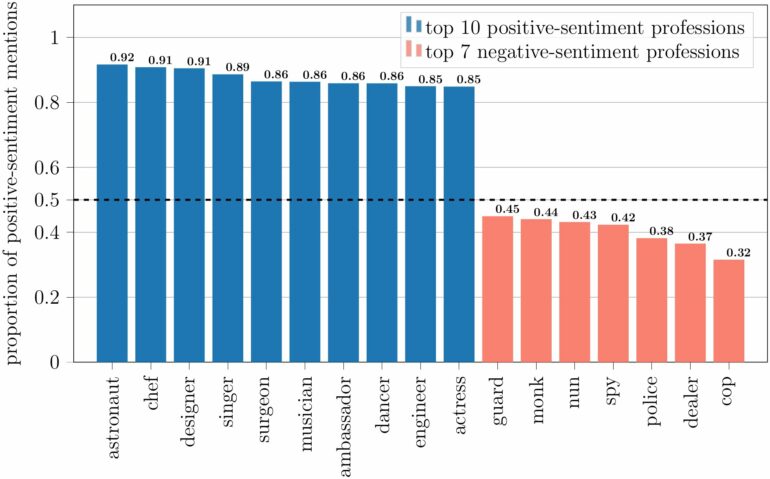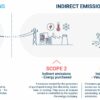Across 70 years of data on media subtitles for television and film, architecture and engineering are the most positively portrayed professions, whereas sales-related professions fare worst, find the authors of a new study published in the open access journal PLOS ONE.
Probing media depictions of professions can highlight stereotypes or discrimination. It can also underscore trends in career choices: for example, the television series “Mad Men” and “Trust Me” prompted many to enroll in advertising courses, detective Dana Scully on “The X-Files” inspired young women to pursue a career in STEM, and the release of the movie “Top Gun” saw a dramatic increase in US Navy recruitment.
Sabyasachee Baruah, Krishna Somandepalli and Shrikanth Narayanan at the University of Southern California have created a database of the English subset of the OpenSubtitles dataset, analyzing mentions of 4,000 professions in subtitles across 136,000 movies and TV shows released between 1950 and 2017.
While overall the frequency of job titles in media correlated with real-world employment statistics of corresponding professions, the researchers found differing trends for specific occupations. For example, they saw increased mentions of STEM, arts, sports, and entertainment occupations over the years, and a decreased frequency of manual labor and military occupations.
The researchers also noted that:
Architecture and engineering are the most positively portrayed professions, whereas sales-related professions are least positively representedOver time, mentions of astronauts, detectives, therapists, musicians, singers and engineers have become more positiveSentiment expressed toward lawyers, police, and doctors has become more negative over timeGender-neutral terms like massage therapists and flight attendants are becoming more frequent than their gendered counterpartsThe frequency of some female job titles such as waitresses, congresswomen, and policewomen has either increased or remained steady, but these are not as frequent as most male job titlesThe frequency of specialized professions like cardiologists, gynecologists, and neurologists has increased while generic terms like doctors and nurses have decreased
The research is limited to subtitles and to UK and US media, so may not capture all aspects of visual representation on screen, and the frequency and sentiment analyses do not control for frequency and sentiment in everyday language. Nonetheless, the authors believe that the study represents a valuable insight into media depictions of professions over time.
Sabyasachee Baruah adds, “We study how the frequency and the expressed sentiment of professions in movie and TV-show subtitles change over time, and find that the media frequency of professions significantly correlates with their real-world employment trends.”
Shrikanth Narayanan notes, “AI provides a quick and fast way to quantify social trends in movies and TV over time. In this particular study, we are able to understand sentiment towards a host of professions. It is interesting to note that the careers on screen dovetail with real-life trends in employment.”
More information:
Sabyasachee Baruah et al, Representation of professions in entertainment media: Insights into frequency and sentiment trends through computational text analysis, PLOS ONE (2022). DOI: 10.1371/journal.pone.0267812
Provided by
Public Library of Science
Citation:
Computational text analysis reveals how TV representations of professions have changed over 70 years (2022, May 18)



